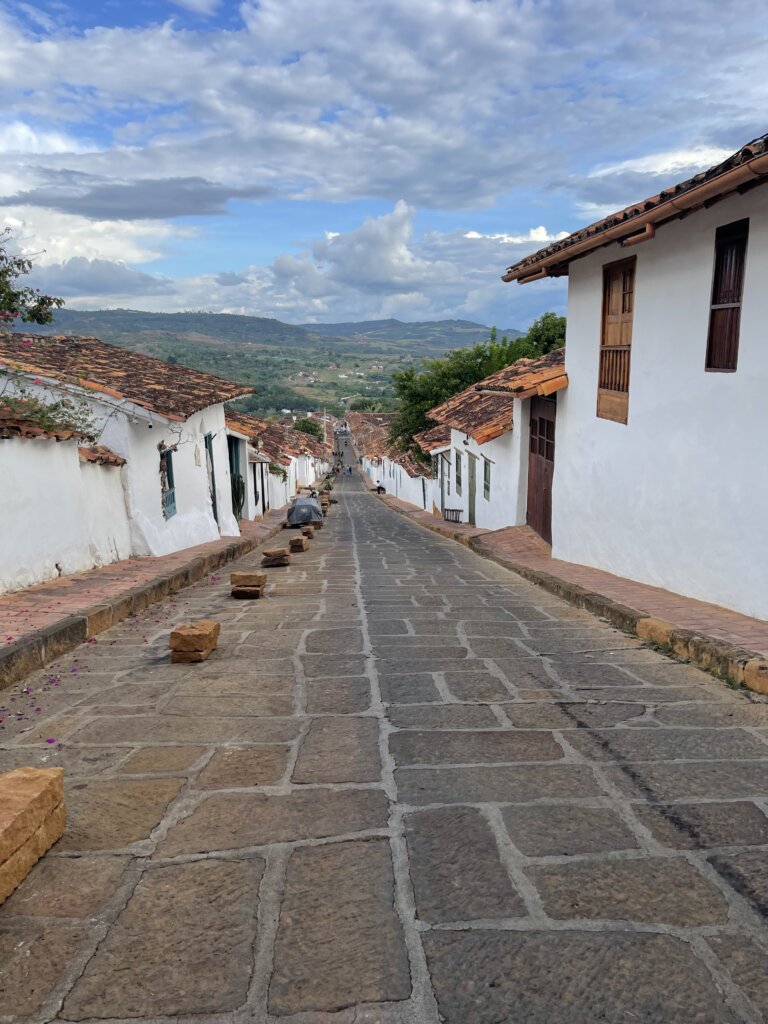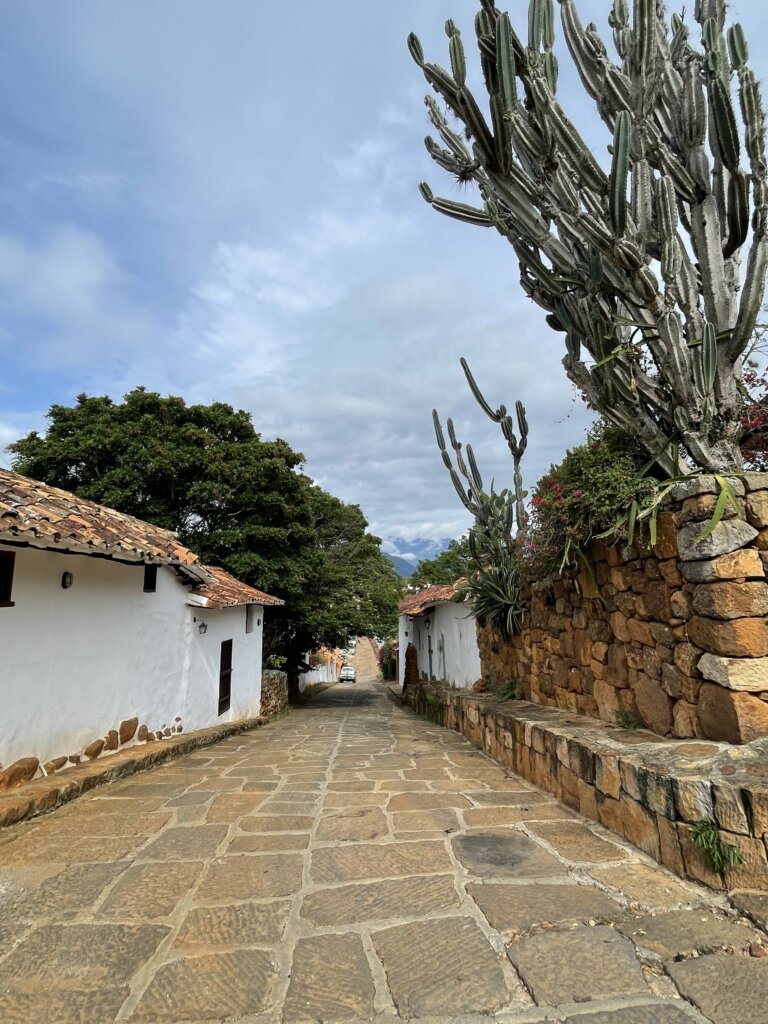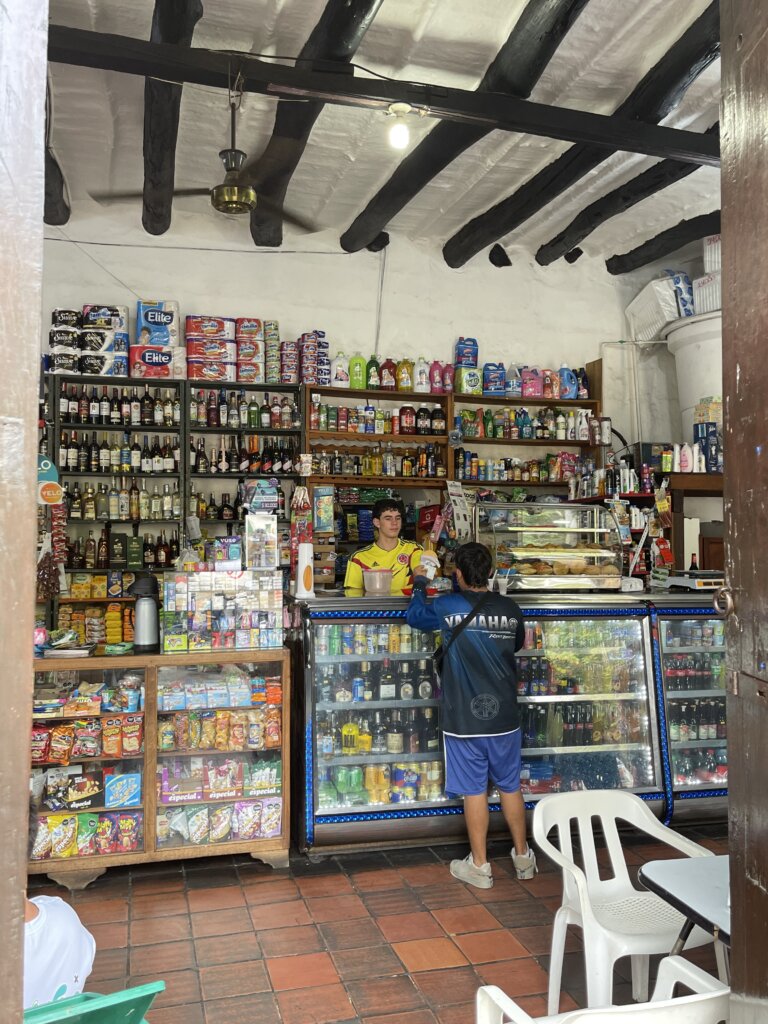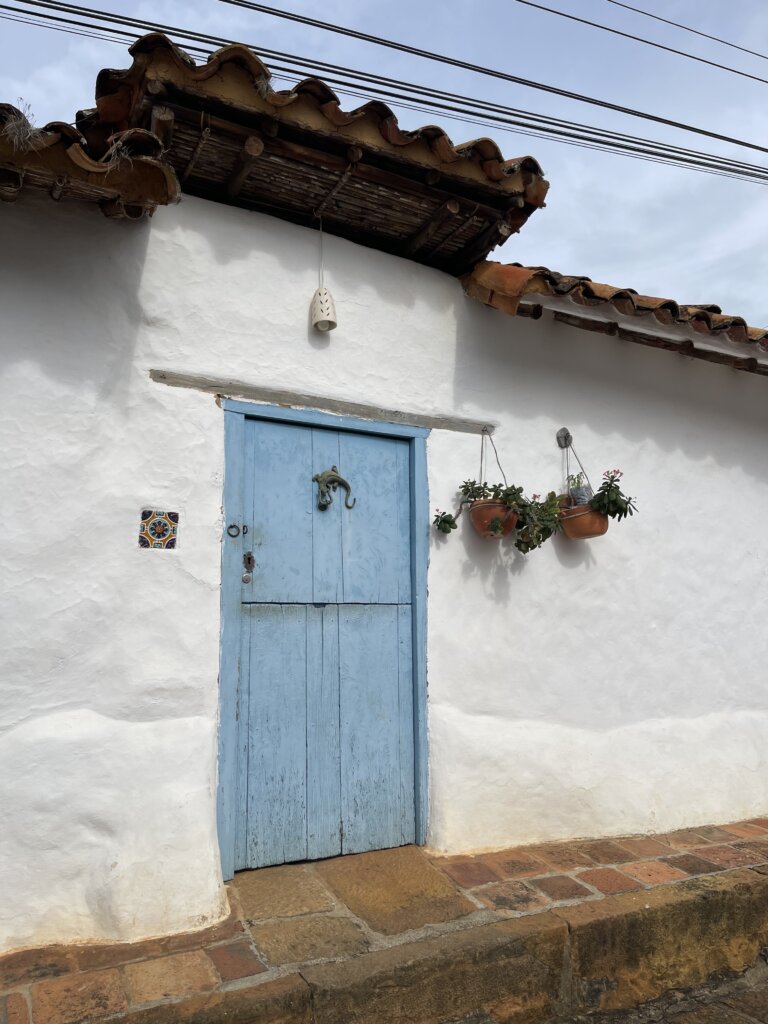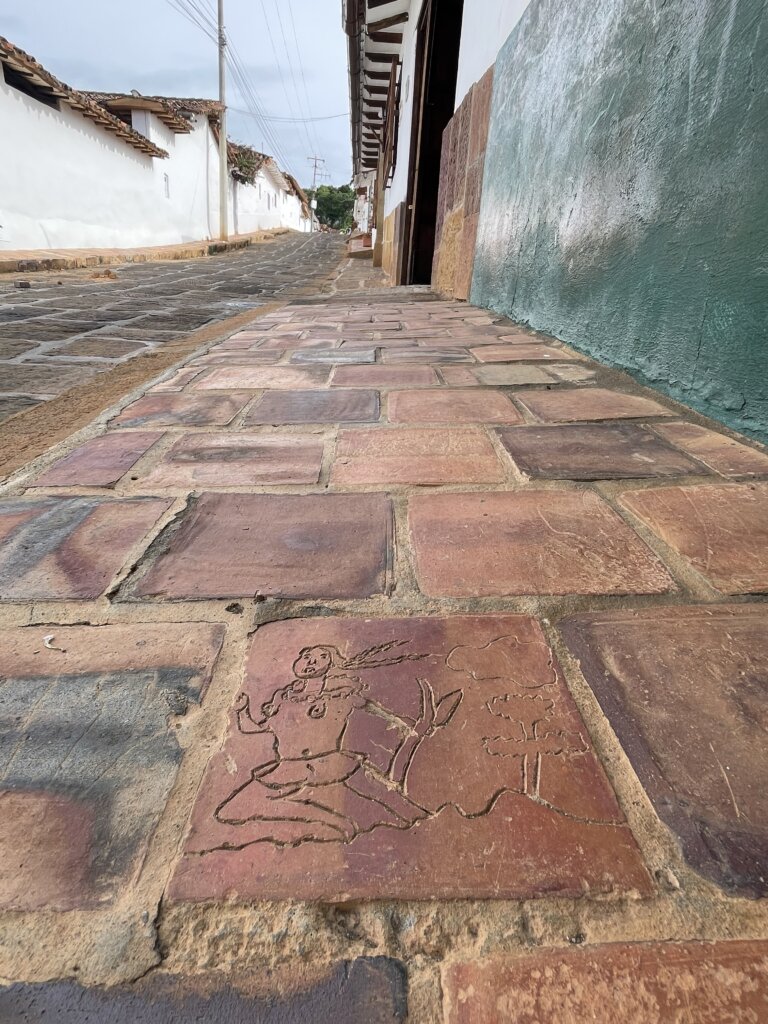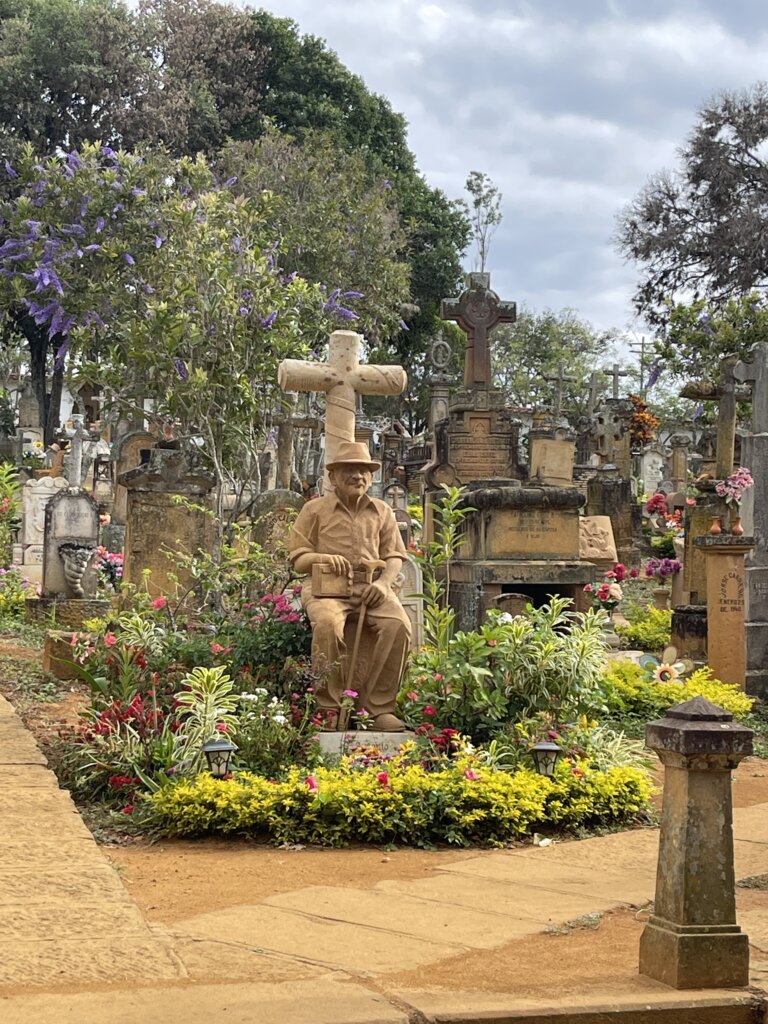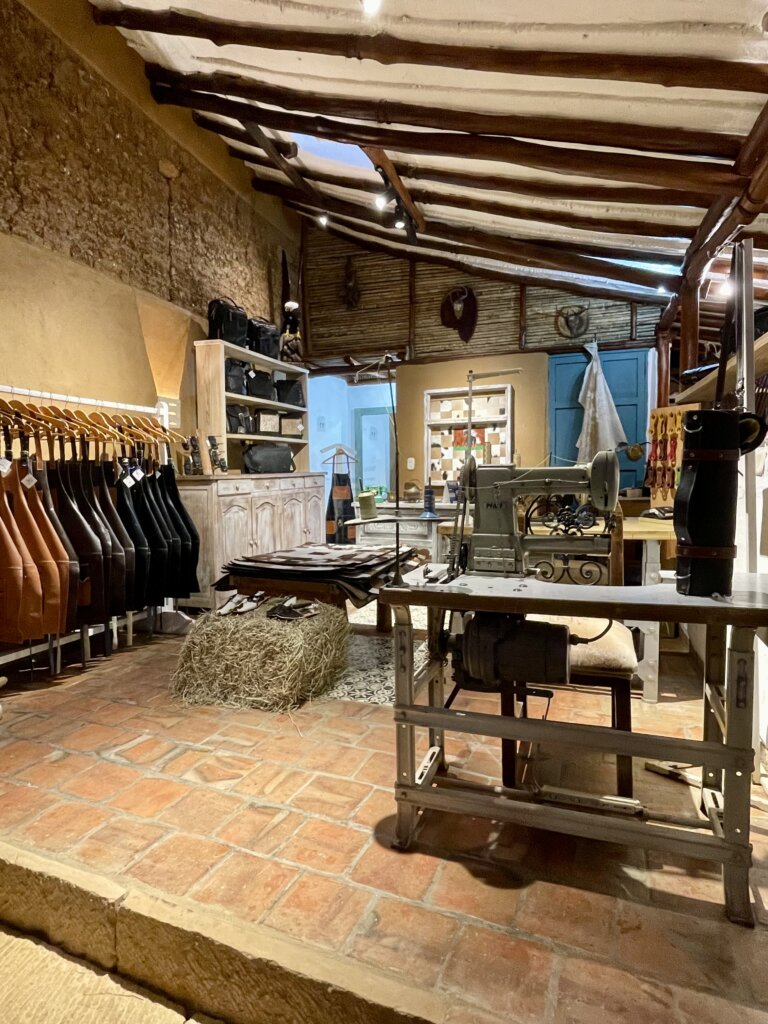April 18th — Leaving Balneario Tropicana ended on a sour note. The business was run by the parents, who I’d guess were in their early 60s. She was a super funky, spunky lady with great energy; he was a quiet, hard-working man. They had made us feel very welcome. Wenke had asked if there were any village celebrations or parades we could attend, and they happily obliged, driving us into town to catch the end of a mass and procession — and then drove us back home. No mention of payment at all.
One of the vehicles was a nice car driven by their city-slicker oldest son and his wife. We thanked them and went on our way.
The next morning, as we were getting ready to leave, we went to say our goodbyes and thanks — but the parents were nowhere to be seen. Instead, the son showed up and asked for 100,000 COP ($35 CAD) per family for the drive. His wife, who spoke English, interpreted for us. Mario paid, but I refused. It was an extortion amount he just pulled out of thin air. No mention of it beforehand. I was angry, especially after such a lovely visit. I guess the son saw us as dollar signs. We hopped in and left feeling very disappointed.
bucaramanga
April 18. The city of Bucaramanga was only a few hours’ drive beyond the balenario. We spent the drive doing Grade 6 English with Jaxon — I read from his textbook while he answered the questions. This chapter was on different types of nouns. We discussed the rules and debated the options. It’s a great learning method for him — and for us too, since neither Tim nor I had heard of Transitive or Non-Transitive verbs before.
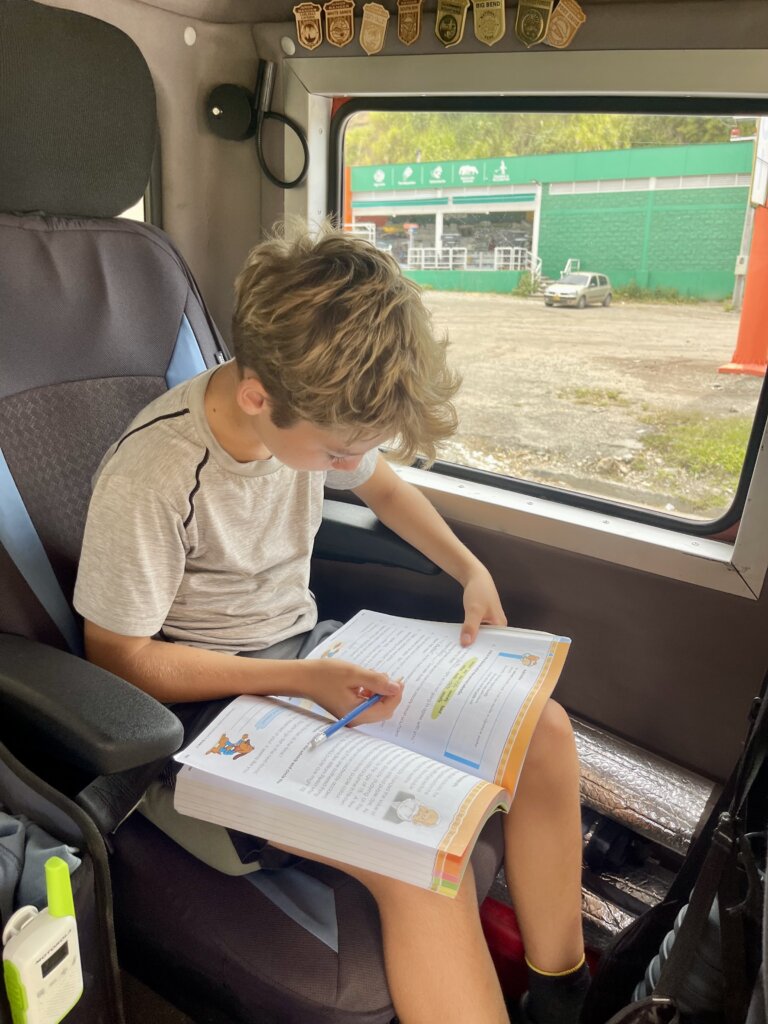
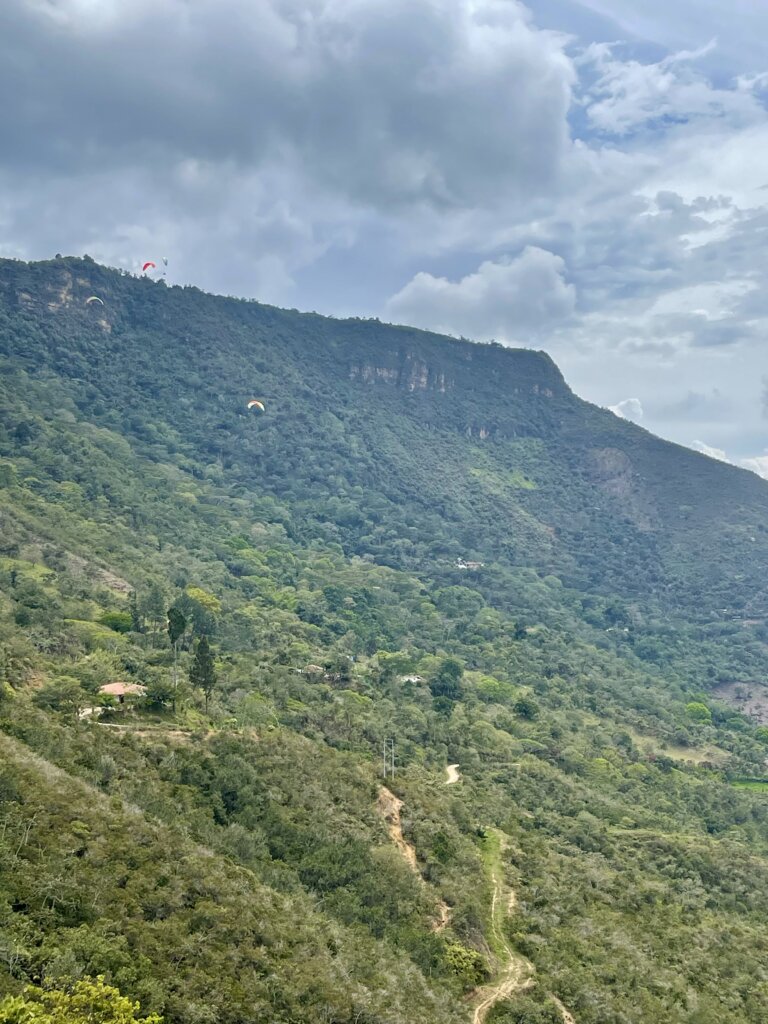
The drive followed the valley, gradually climbing into the foothills of the Andes. In Bucaramanga, we pulled off down a side street in search of food and found ourselves in the heart of a small city community. Parking the truck, we could feel all eyes on us. Charley and I came back with a large bag of street food – different kinds of empanadas and meat-stuffed potato balls — all deep-fried, not the healthiest, but cheap and delicious. When we returned, Tim was, once again, surrounded by curious onlookers. Some pointed at the country flags on our truck; others chatted with Tim, who did his best in Spanglish.
Lunch was topped off with ice cream. The woman selling it was so fascinated by us she took photos and started following us on Instagram… which hasn’t been updated since the USA! The Colombian people are incredibly friendly and kind — genuinely interested in our journey and how we’re enjoying their country.
We spent the night just outside the city, parked on a hill at 1,178 meters, at a paragliding club. Temps were cooler, time for long pants. When we arrived, Mario and Wenke were already chatting with three motorbike travellers — a German couple and an American from Hood River, Oregon. Turns out, he knows our good friends Michelle and Travis very well! Such a small world.
The next morning, after a supermarket stop to restock the trucks, we pushed on to Barichara.
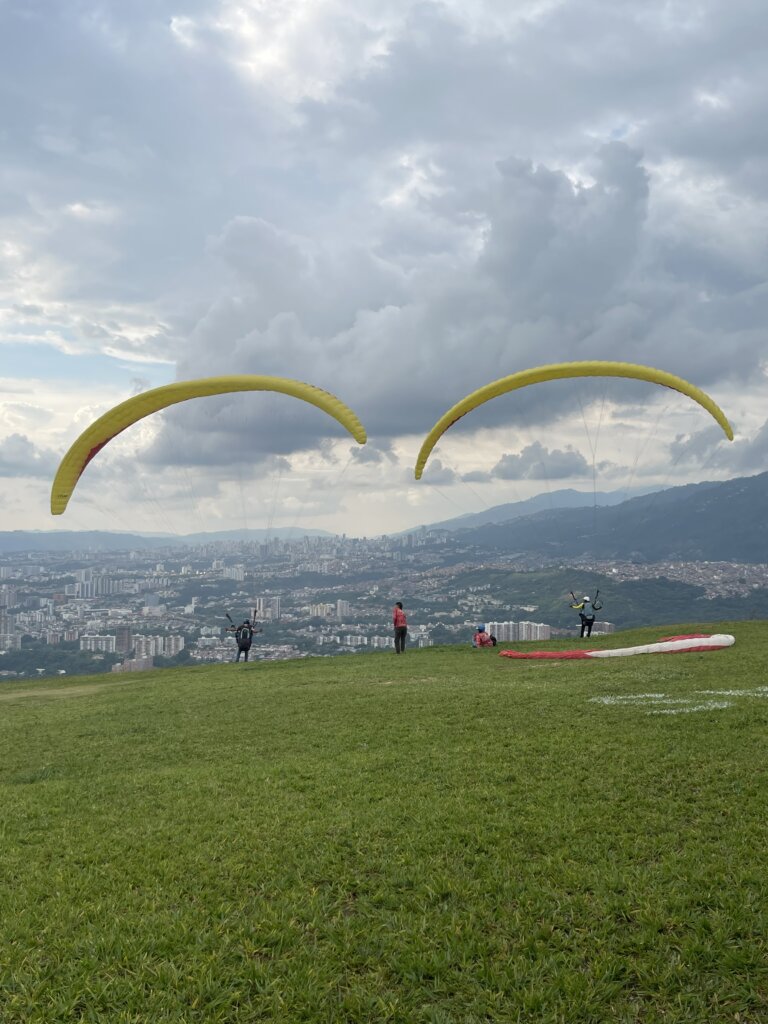
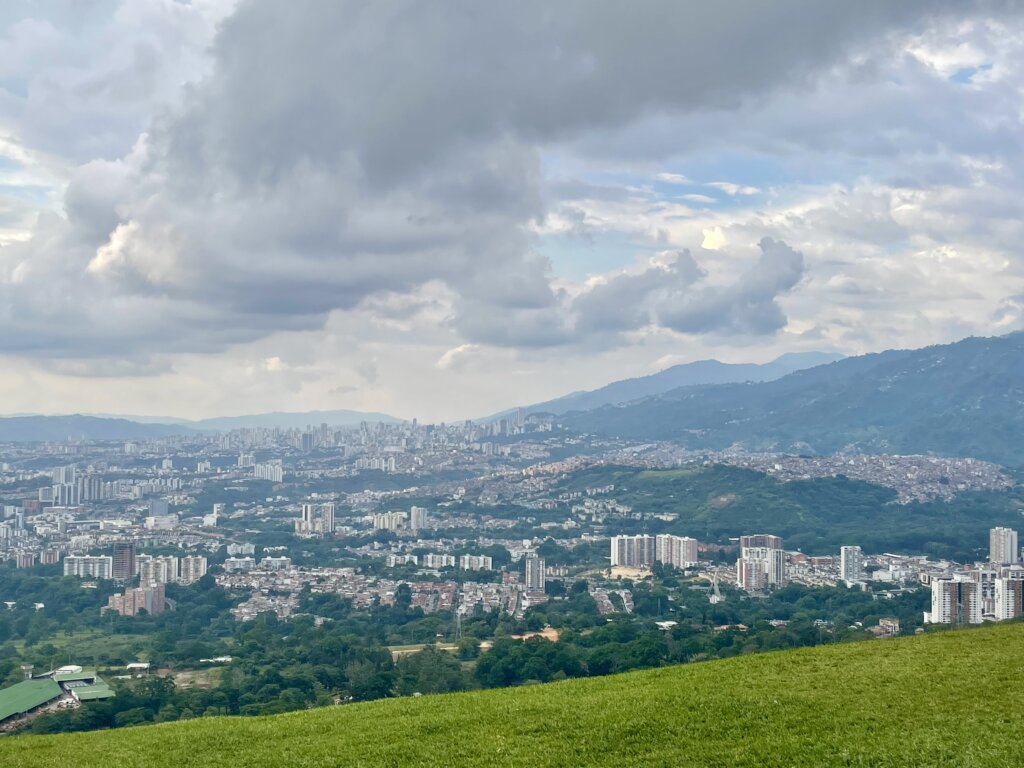
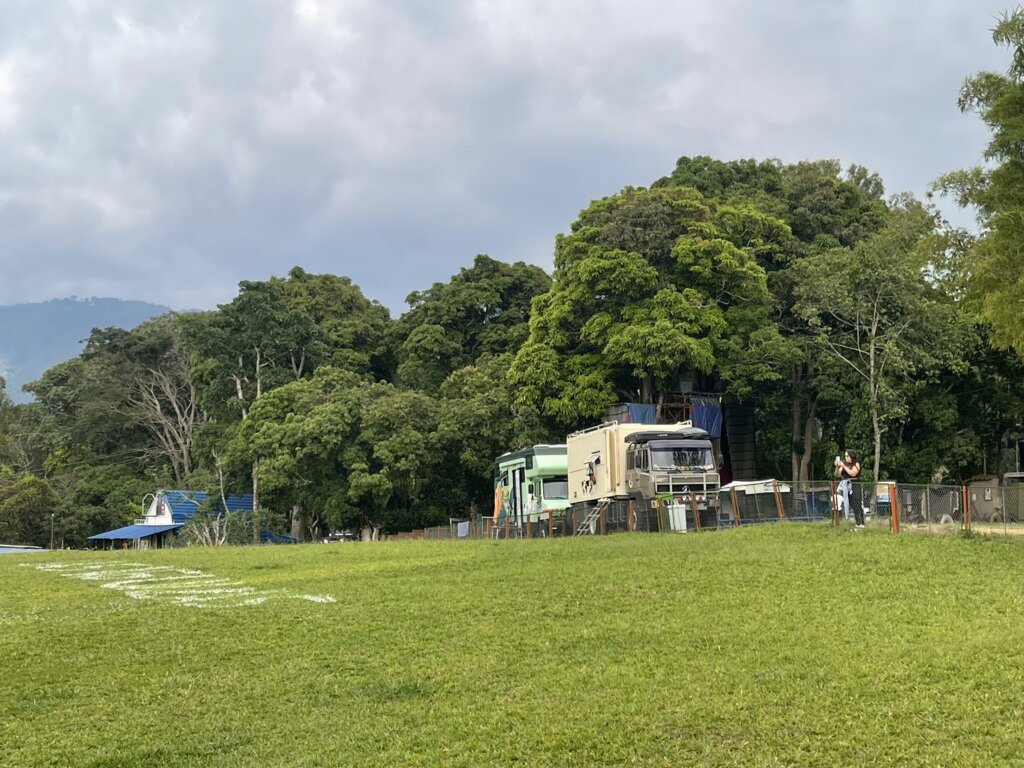
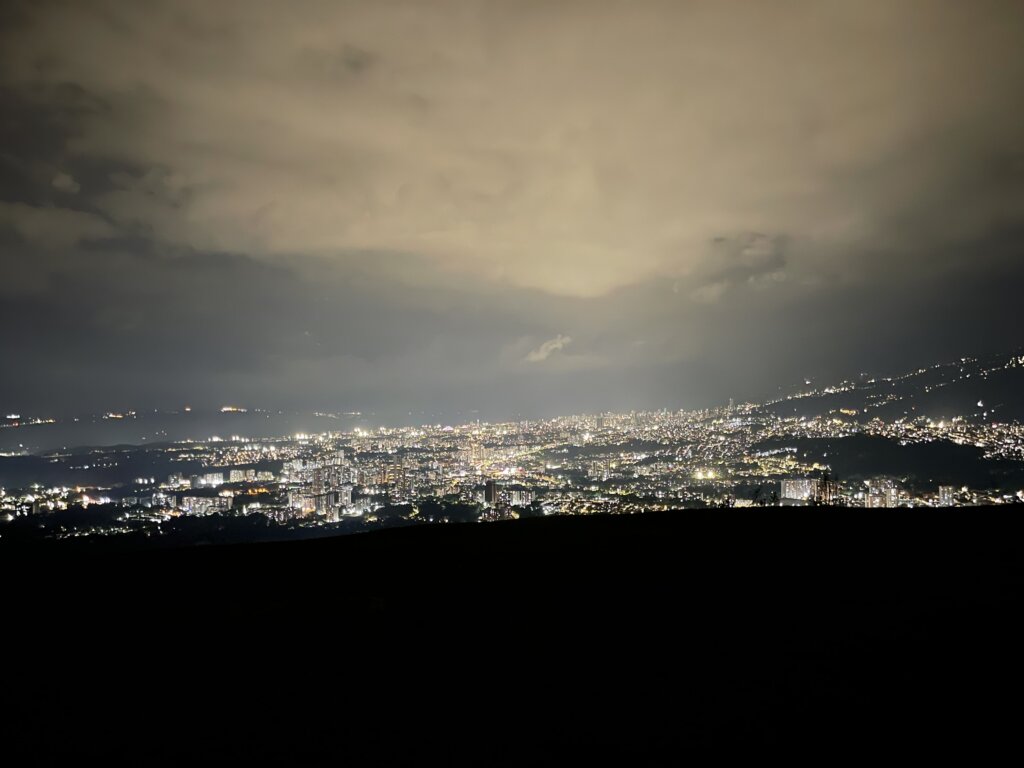
From Bucaramanga to Barichara is only 120 km, but it took us four hours. We were deep in the steep, narrow, twisty-turny, heavy-traffic, suicide-driver country I remembered reading about in my dad’s blog. He traveled these same roads just eight months earlier.
The landscape shifted dramatically: mountains rising steeply, roads tracing what were probably ancient animal tracks, turned trails, turned dirt roads, now barely paved. To go off-road here would be certain death. We even passed a broken guardrail — someone hadn’t made the turn, I can’t imagine the fear they experienced.
Up and over we went, down the other side, squeezing through bustling towns. Some people stared as we edged through narrow streets; others didn’t even notice us. From up high in the cab, we could peer right into shops and homes. Life here seems simple — yet everyone has a cellphone.
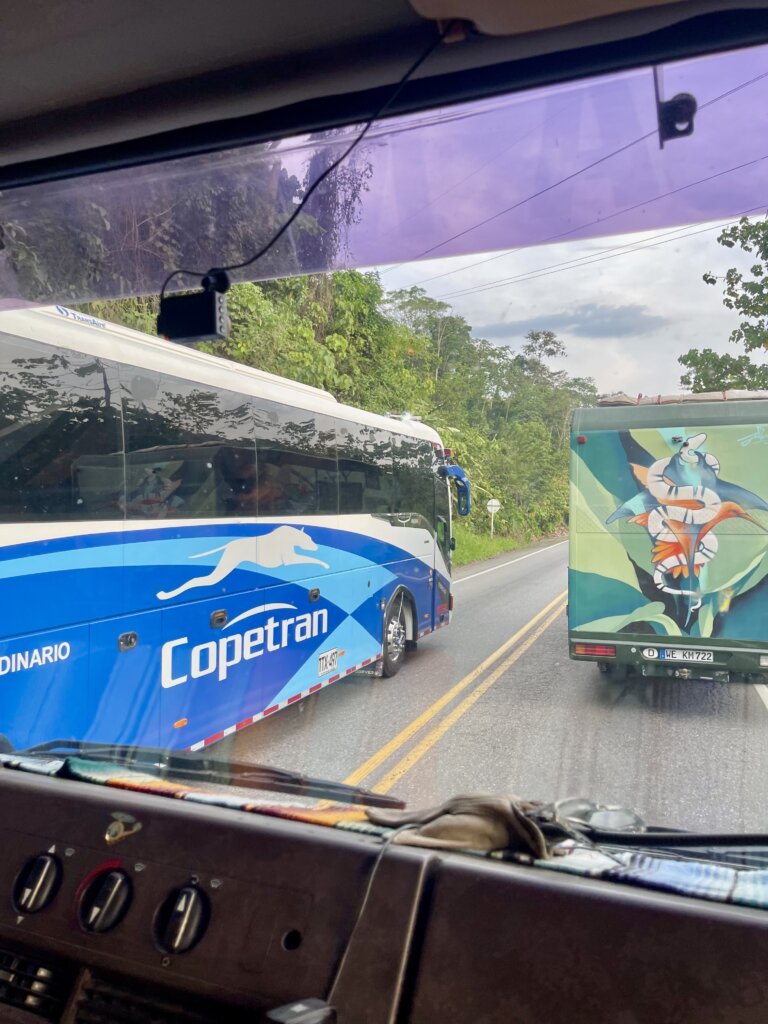
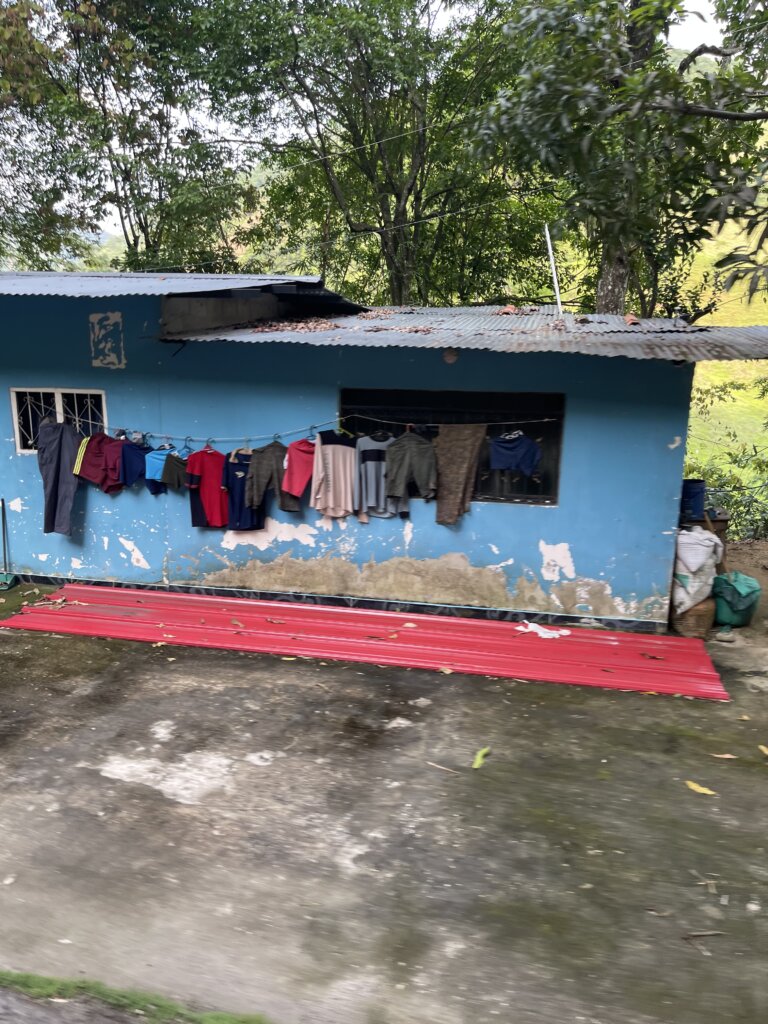
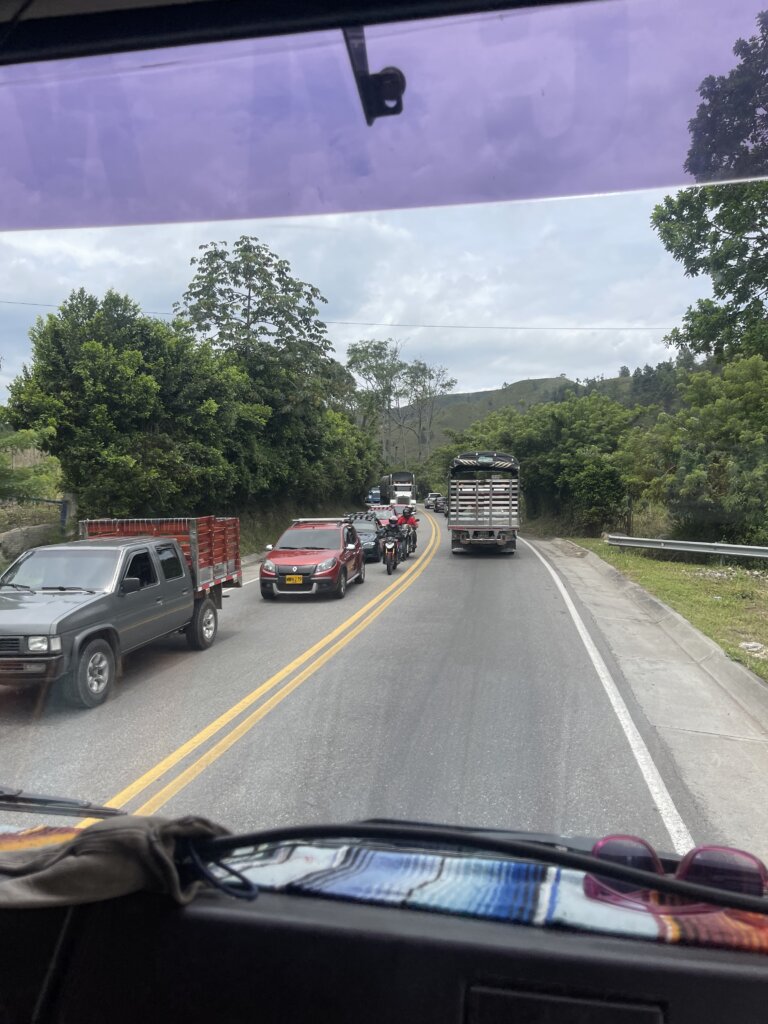
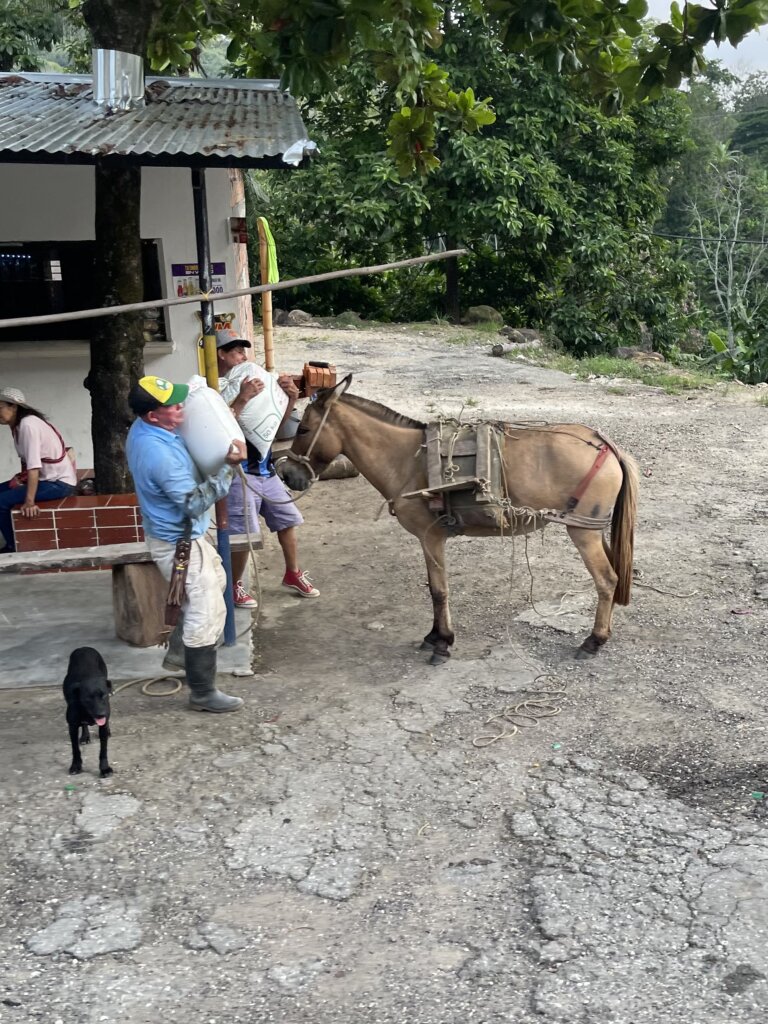
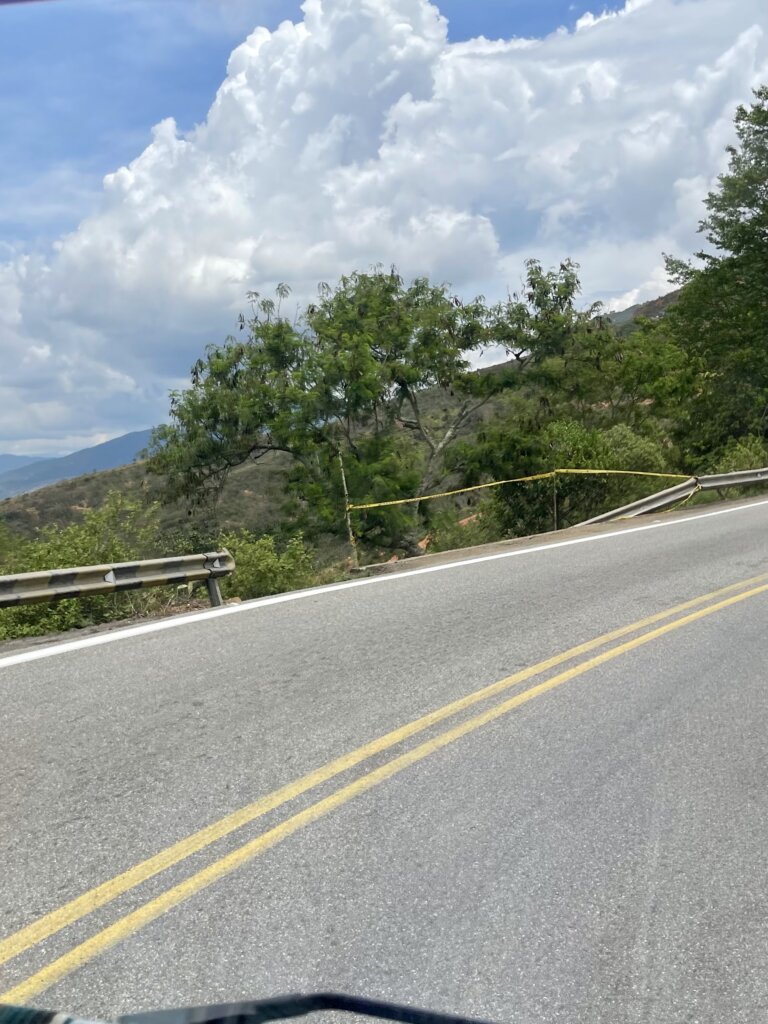
barichara
April 19-20th. Barichara is often called “the most beautiful town in Colombia” — a stunning colonial village perched on a steep hillside. We arrived just before dark and parked in a dirt patch alongside other trucks. Our view for the night was a sweeping 180° panorama of the mountain range beyond, with heavy grey rainclouds rolling in.
It was Easter Saturday, and we locked up the vehicles to explore the cobblestone streets, whitewashed buildings, and orange-tiled roofs. Barichara felt like one of those places frozen in time — like Oaxaca, Mexico or Antigua, Guatemala. The town had a peaceful, dreamlike atmosphere, every corner revealing charming plazas, centuries-old churches, and breathtaking canyon views. Local artisans kept traditions alive, their crafts adding to the charm.
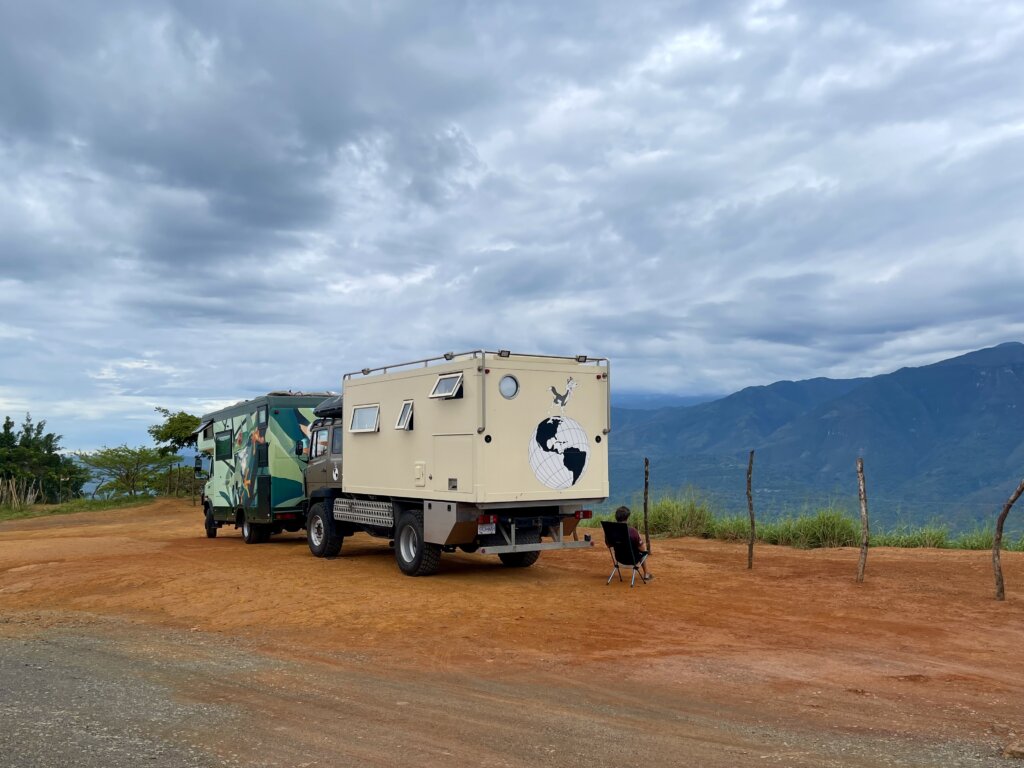
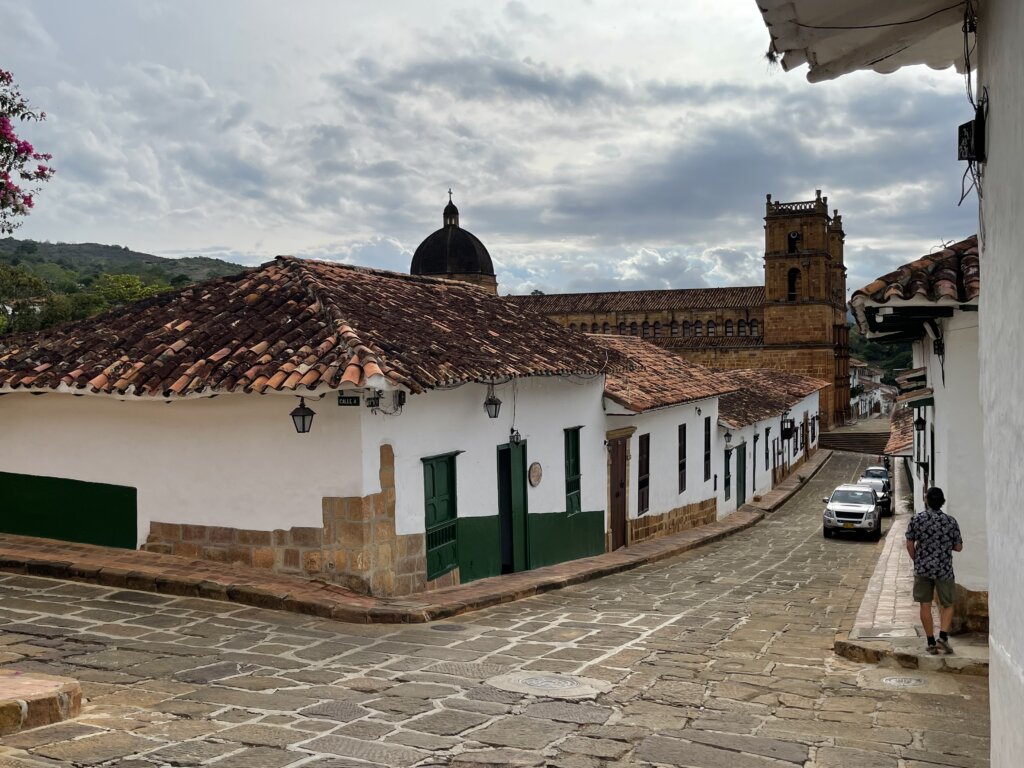
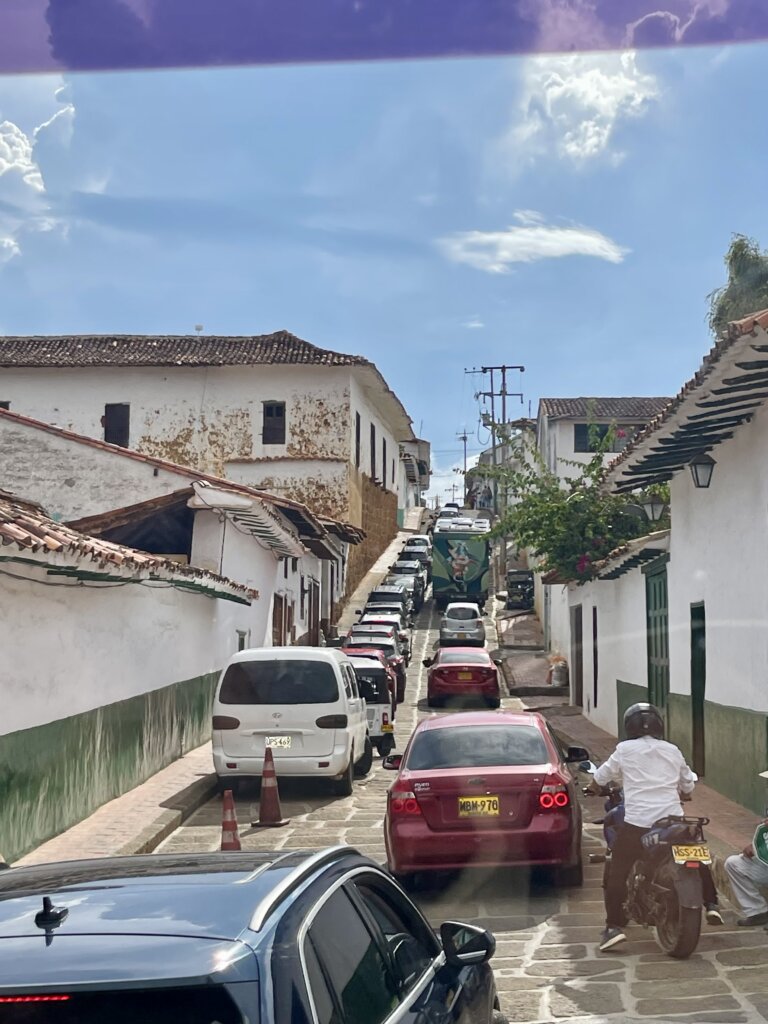
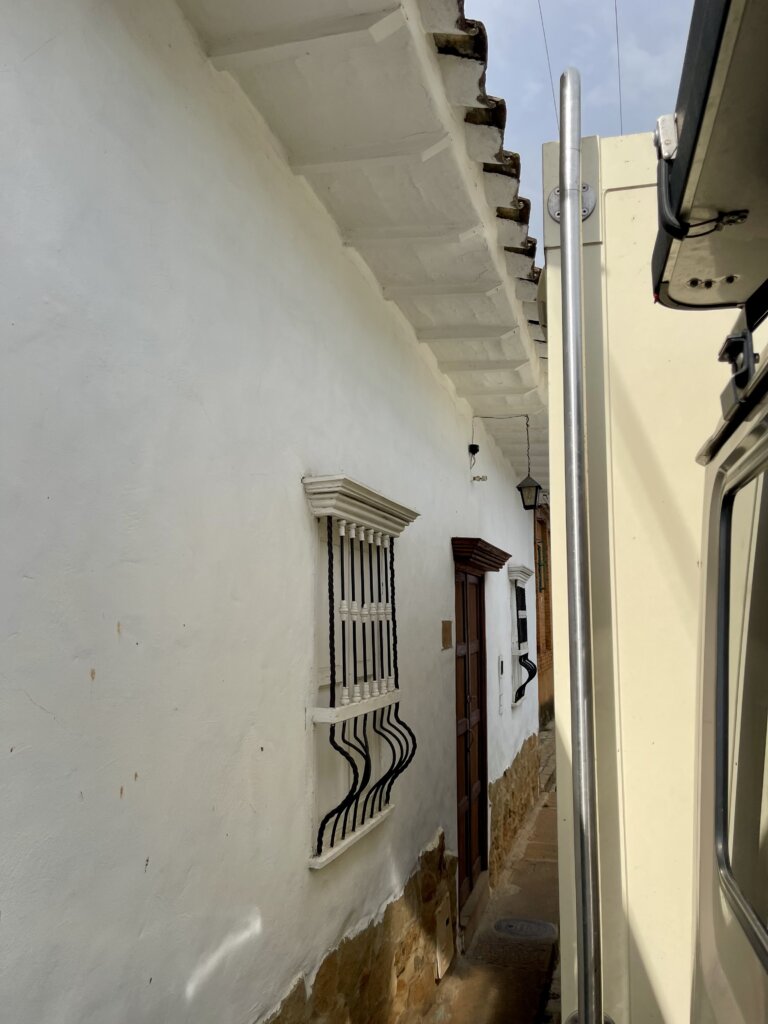
This is why I love to travel: finding those unique corners of the world where culture and character are still alive.
But — the kids were annoying and spoiled it for me. Complaining, whining… we cut our walk short and headed home. Tim and I agreed: tomorrow morning we would sneak out early, while they slept, and explore in peace.
On the way back, we passed a local soccer game. Suddenly, Jaxon’s tired legs and sore feet were forgotten. With pleading eyes, he asked if he could join. Within a minute, he was on the field! It was a dads-and-kids game, and the field was fully netted to prevent balls from disappearing down steep streets. Jaxon played for 1.5 hours, scoring five goals, grinning ear to ear.
Charley tried to entertain herself — but she’s “too old” for the trampoline now, outgrown the playground, and got bored of the exercise equipment after 20 minutes. At least one kid was happy!


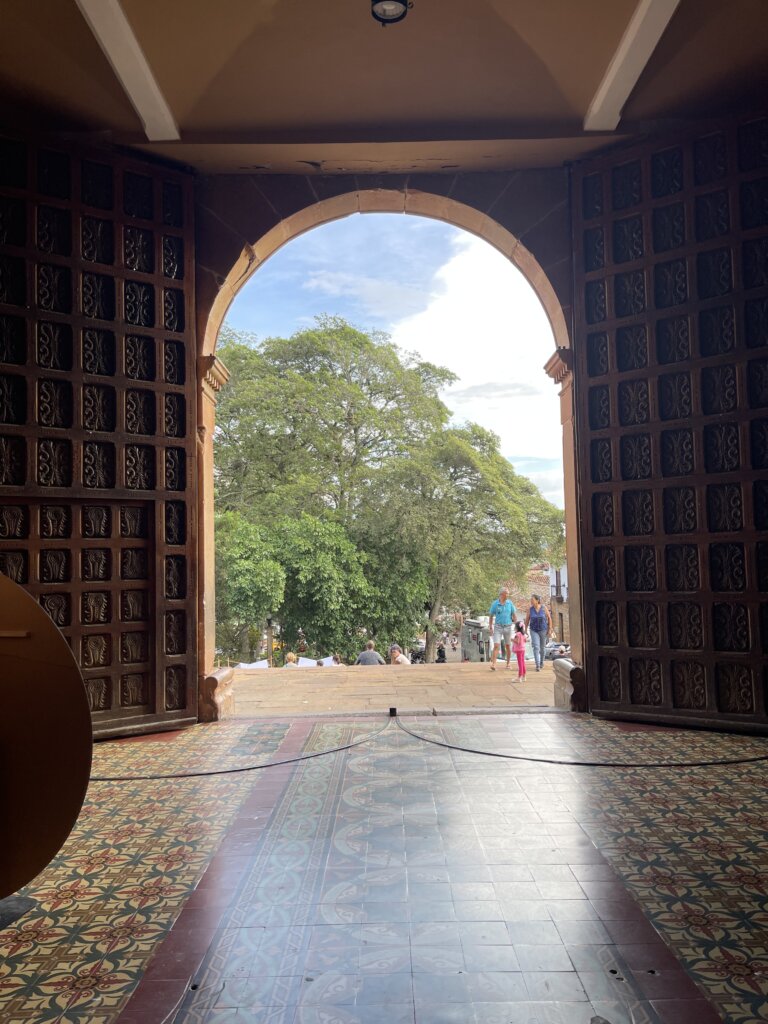
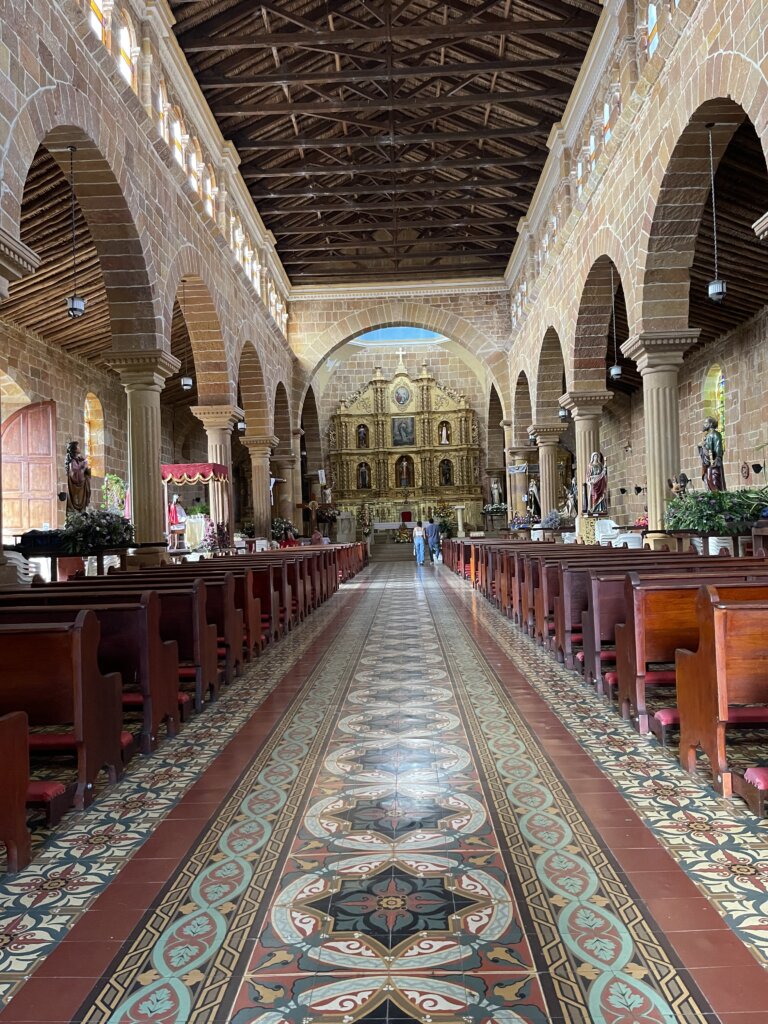
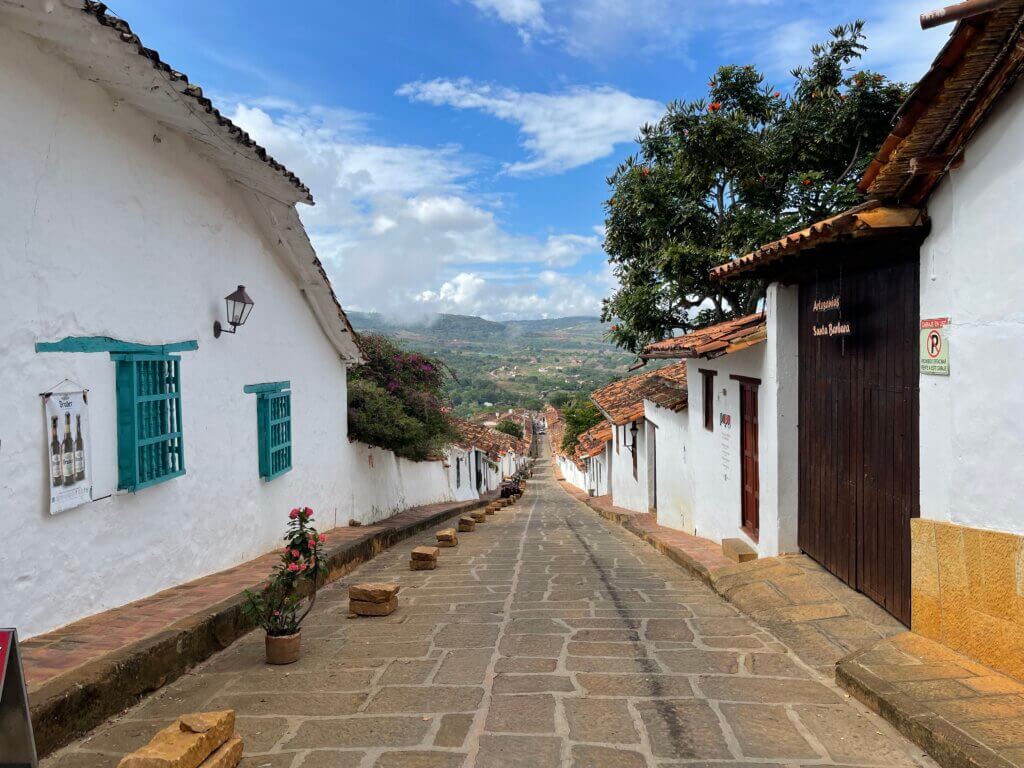
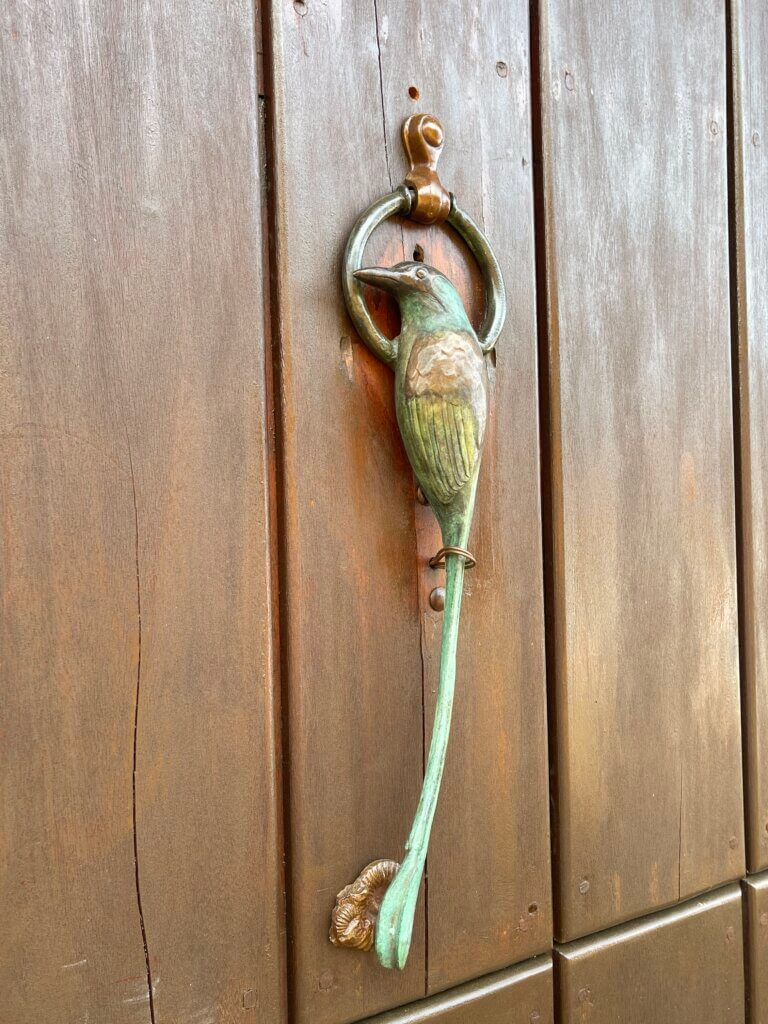
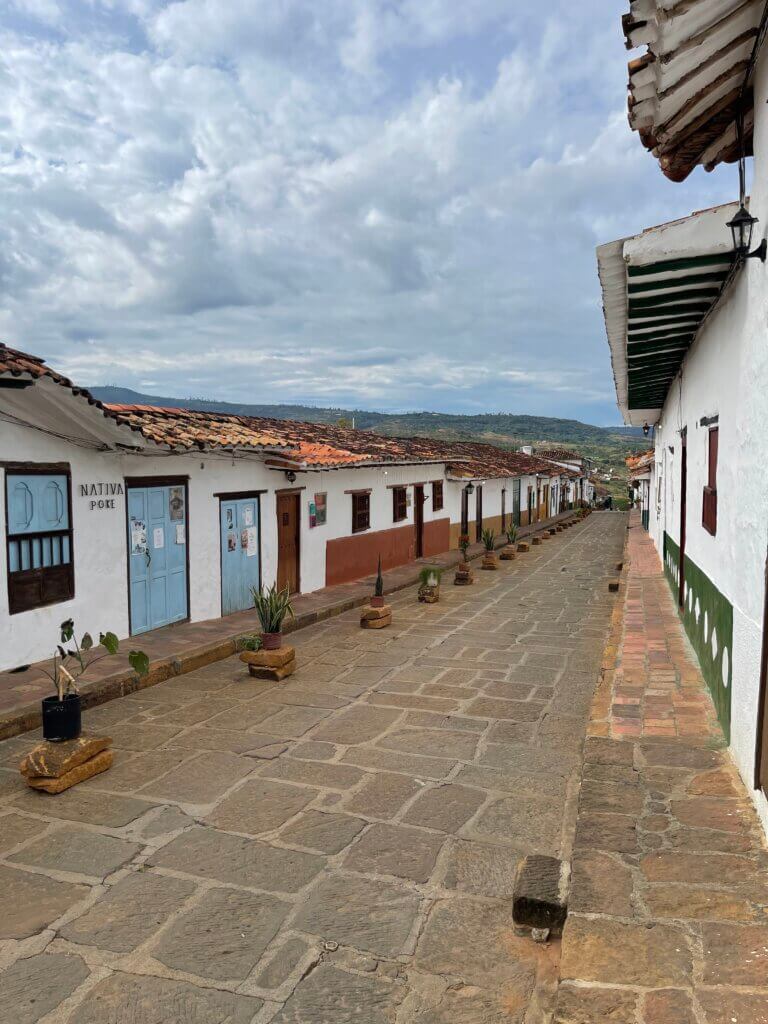
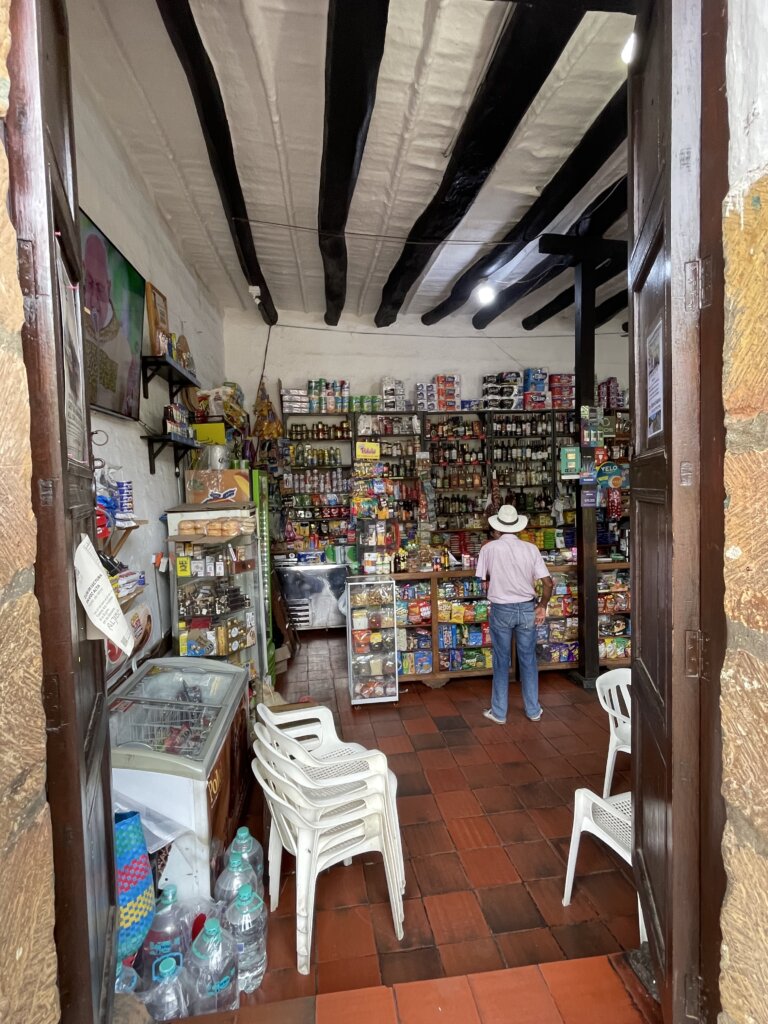

As promised, Tim and I left the kids sleeping the next morning and set out at 7 a.m. to explore on our own. It was Easter Sunday, and mass was being broadcast over the loudspeakers — a lovely, chanted or sung sermon drifting through the air as we climbed the cobblestone streets, snapping photos.
Cutting back through a garden path, we found ourselves out on the ridge above the village. It was a beautiful, peaceful morning. I loved every second of that walk.
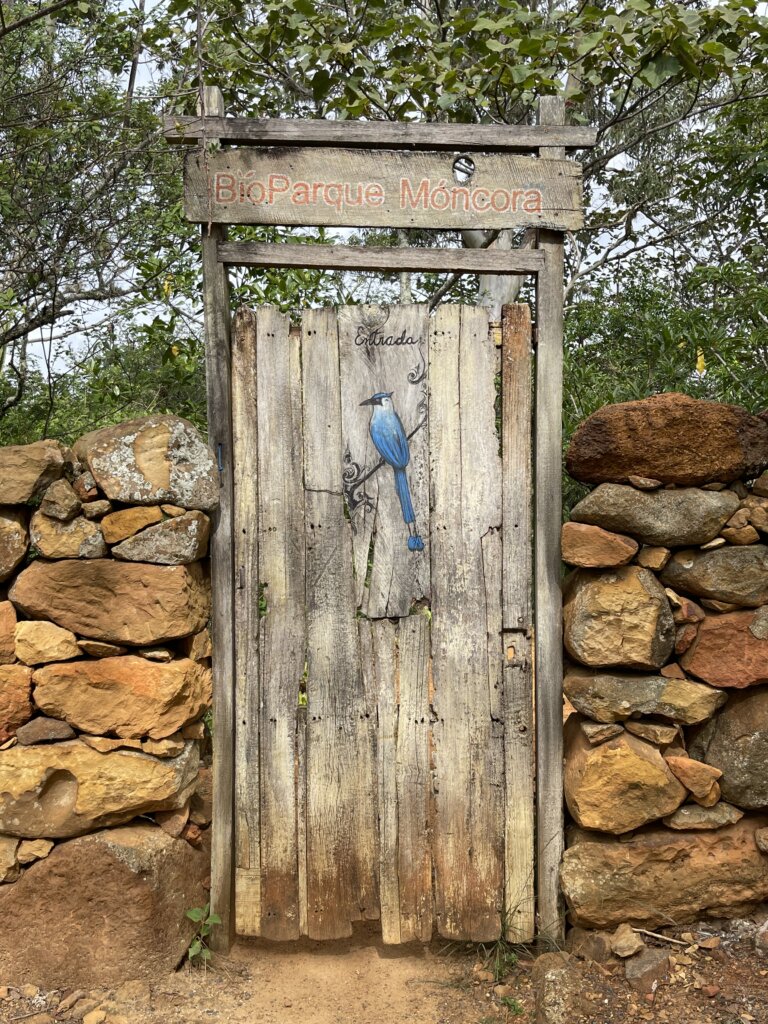
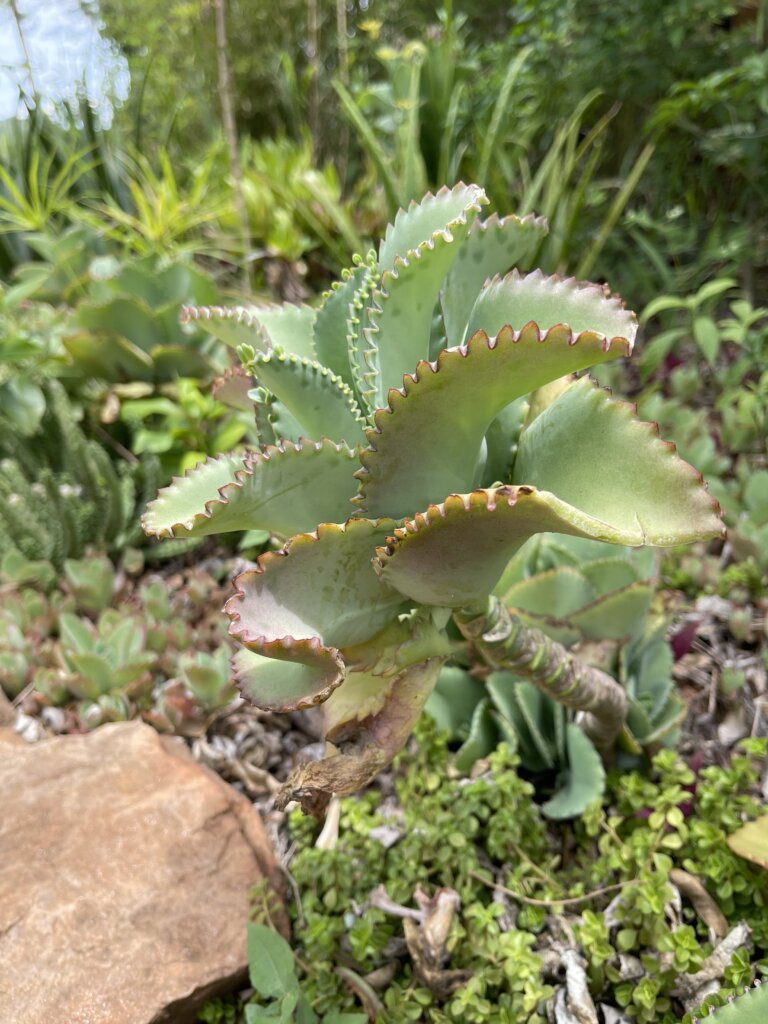
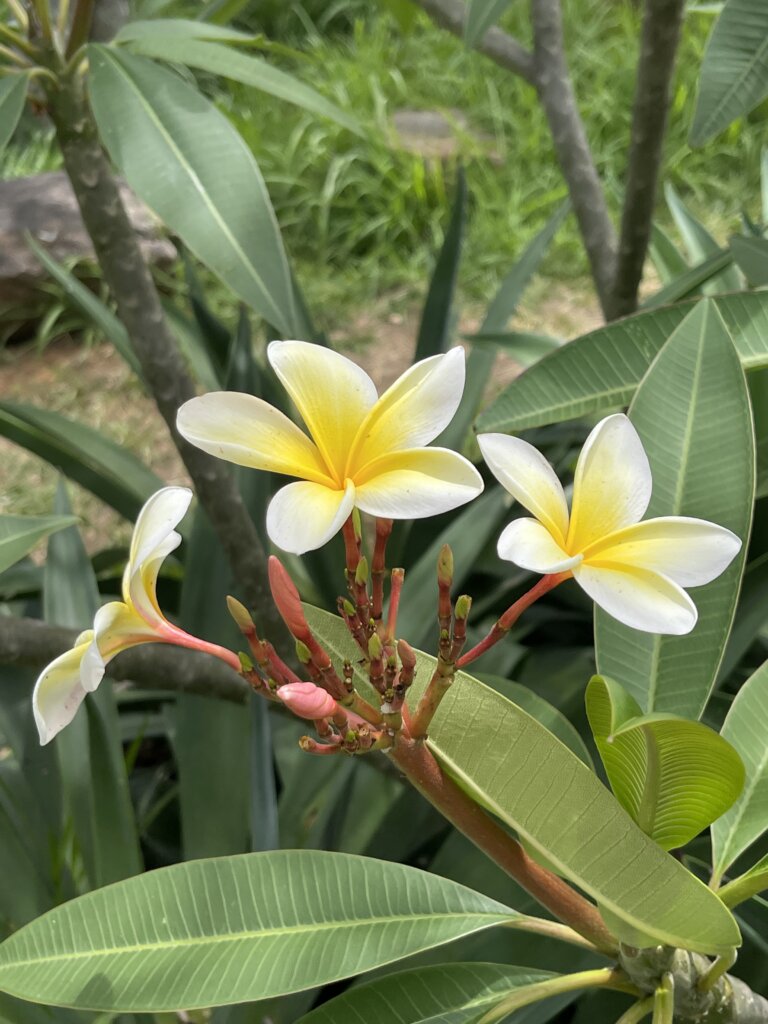
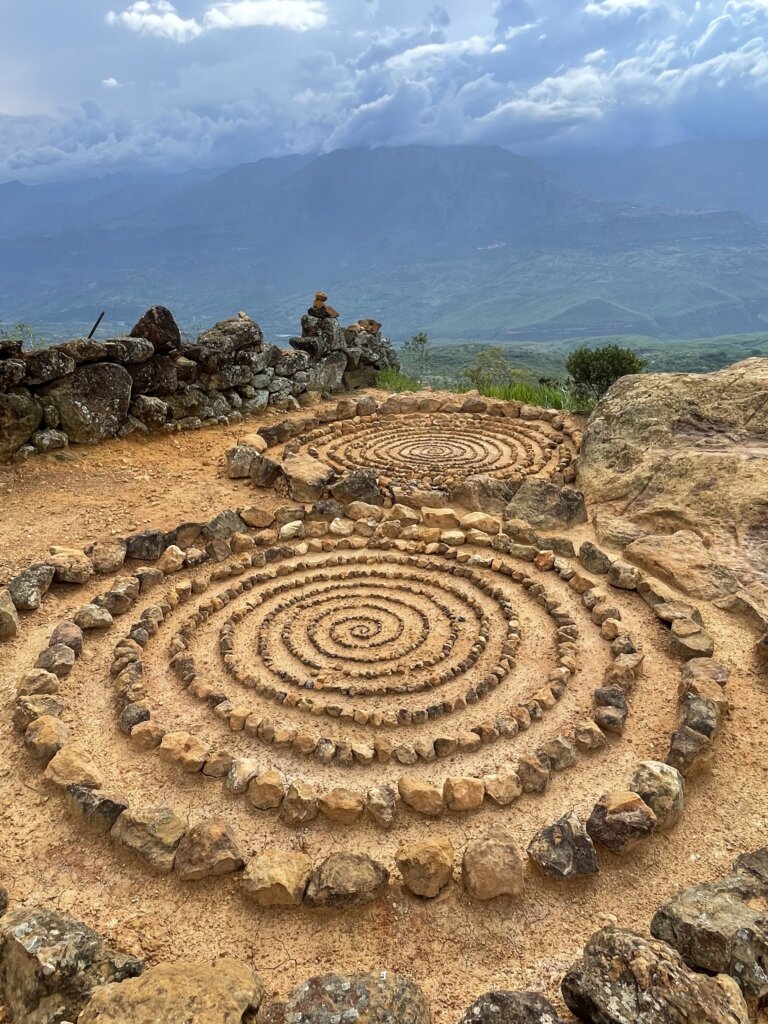
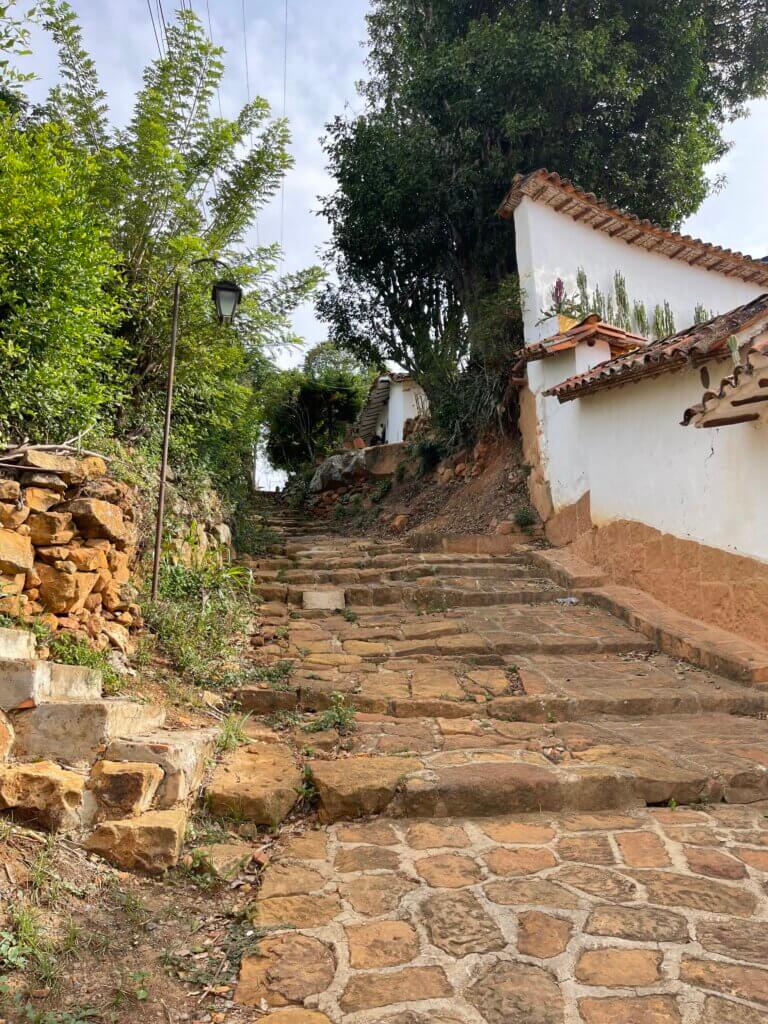
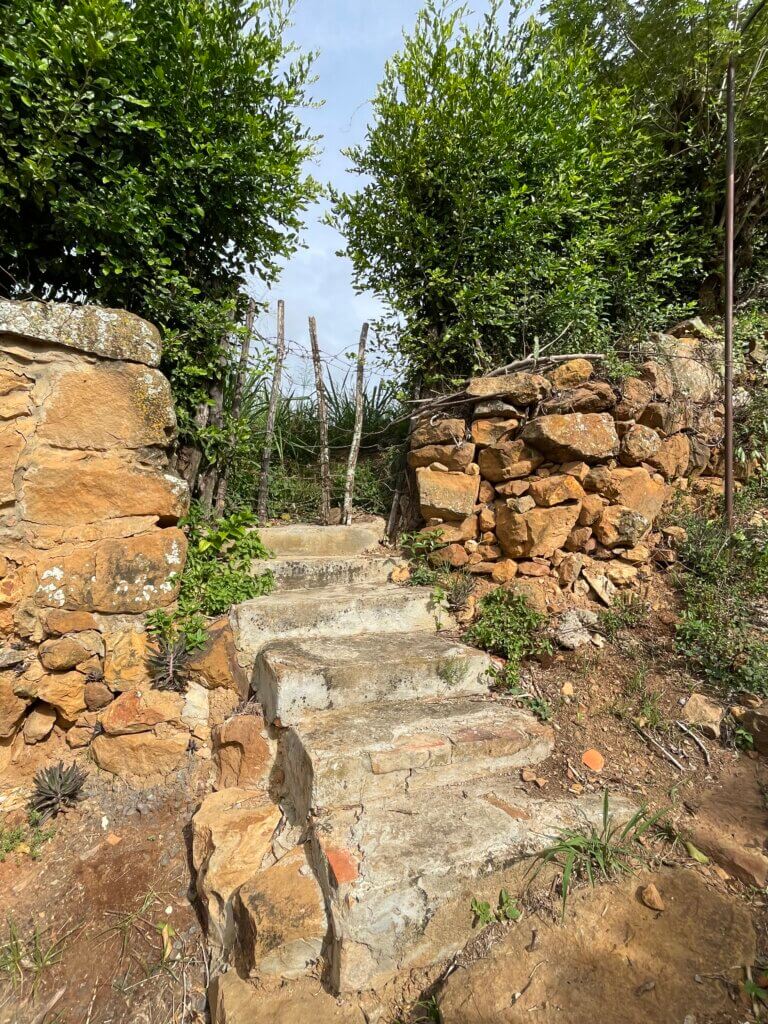
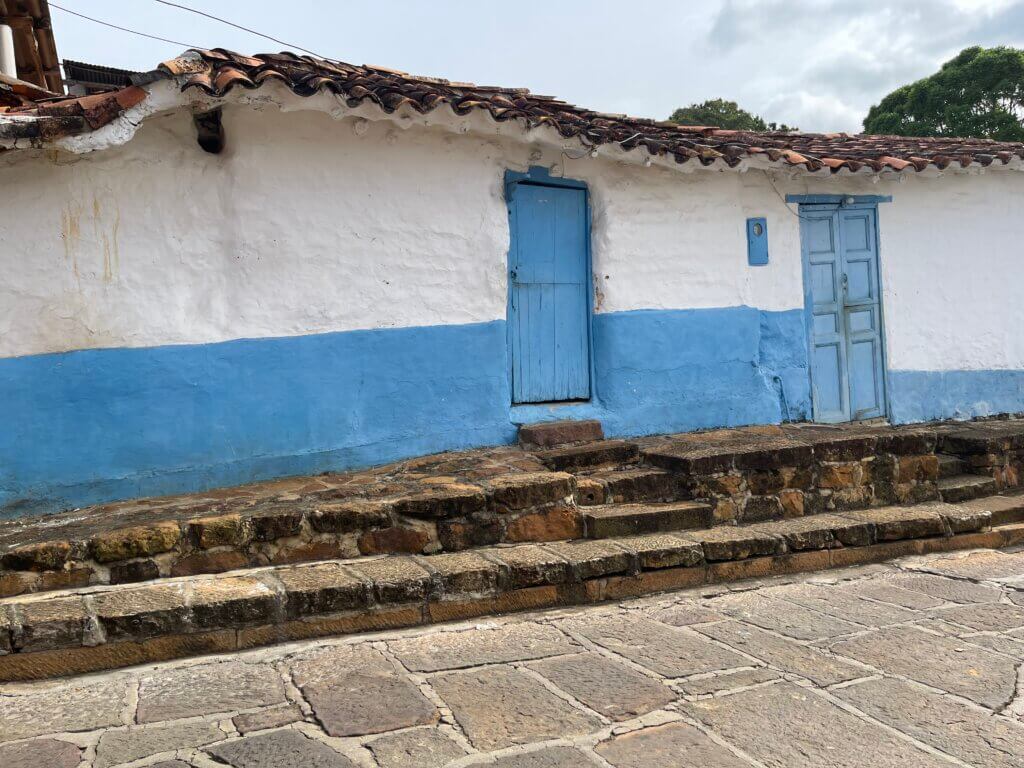
FINCA GUAIRAMO
This is a popular place for overlanders to camp — my dad and Jen also spent a night here. It’s owned by a lovely Dutch couple who bought the former tobacco farm 15 years ago. Since then, they’ve been actively regenerating the land, once stripped of nutrients. Now trees and gardens bring fresh life.
Julia, an architect, remodeled the old buildings into their home — preserving old doors as tables, for example. The new bathrooms took three years to complete, hand-built with care. Rainwater is collected and used for flushing, showers, and laundry. Solar power heats the showers, and a worm farm takes care of human waste.
Julia bakes delicious sourdough bread — we bought two loaves — and she even gave me a bit of her starter and her recipe so I can bake my own!
While Tim stayed back at camp with the kids, Mario, Wenke, and I hiked the trail up the rock ridge and back into town. I just loved this place and couldn’t get enough. We returned late, riding a tuktuk through the dark.
That night it rained hard — thunder clapping, lightning flashing — loud enough that we half-expected Jaxon to come flying out of the tent scared. Tim called out to him, but he was already asleep and didn’t even remember the storm the next morning.
The rooftop tent, though, is starting to show its age: the canvas is sun-faded and breaking down. Tim’s worried it won’t last the rest of the trip. I’ll reach out to iKamper, but getting a replacement shipped down here will be tricky.
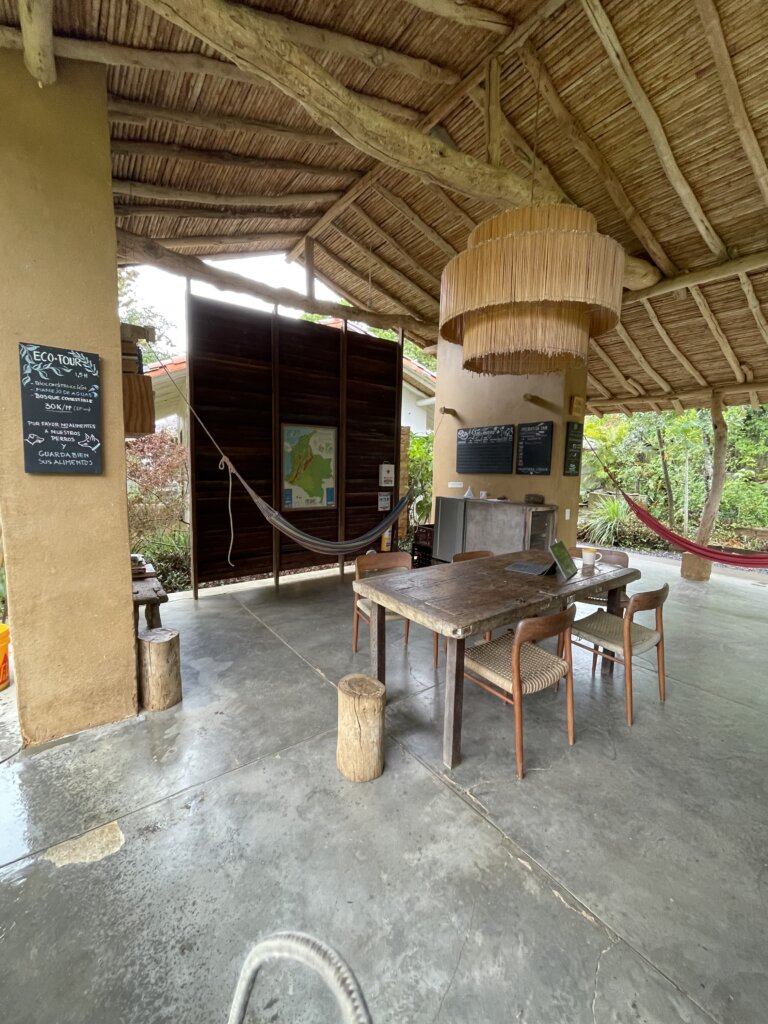
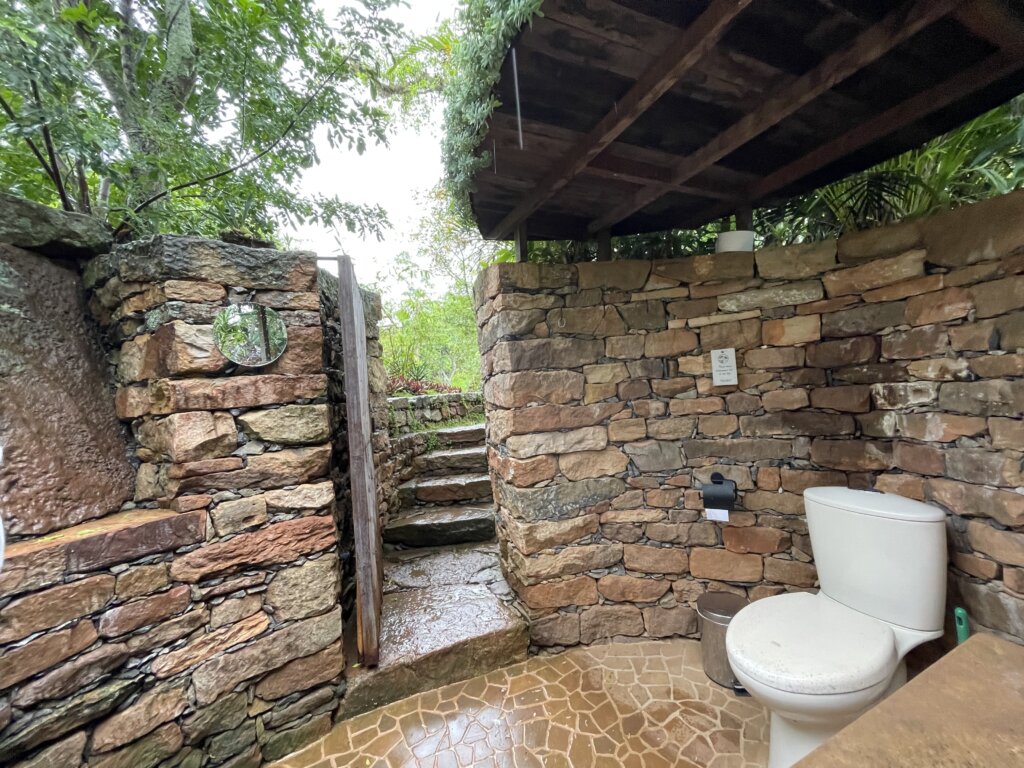
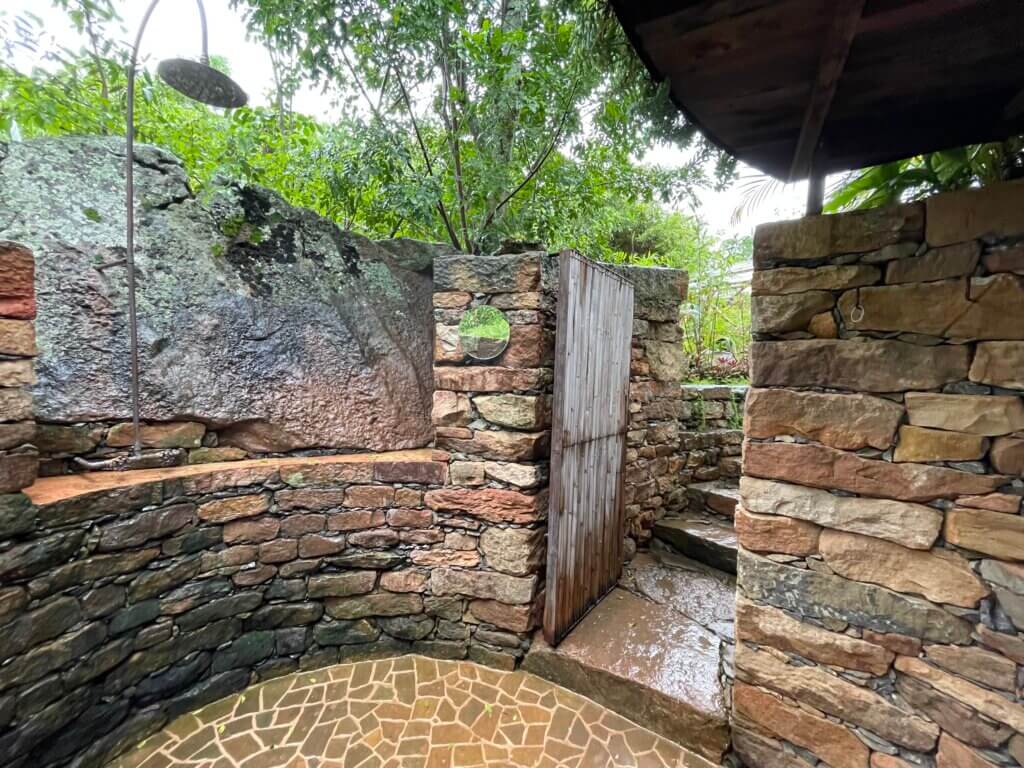
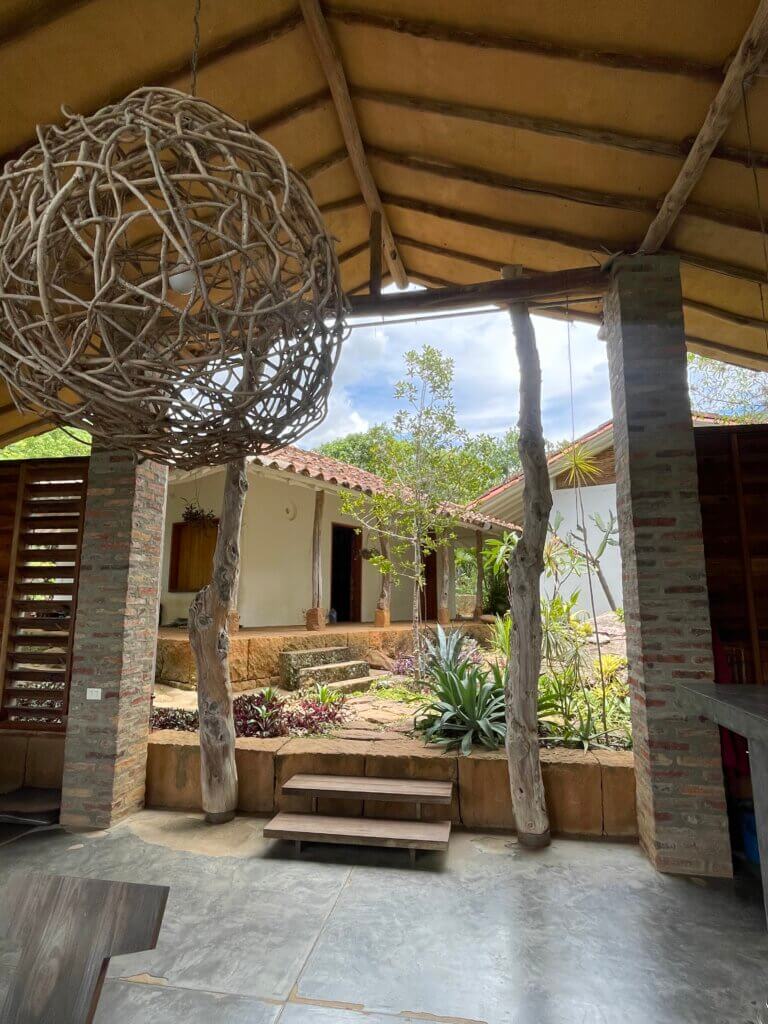
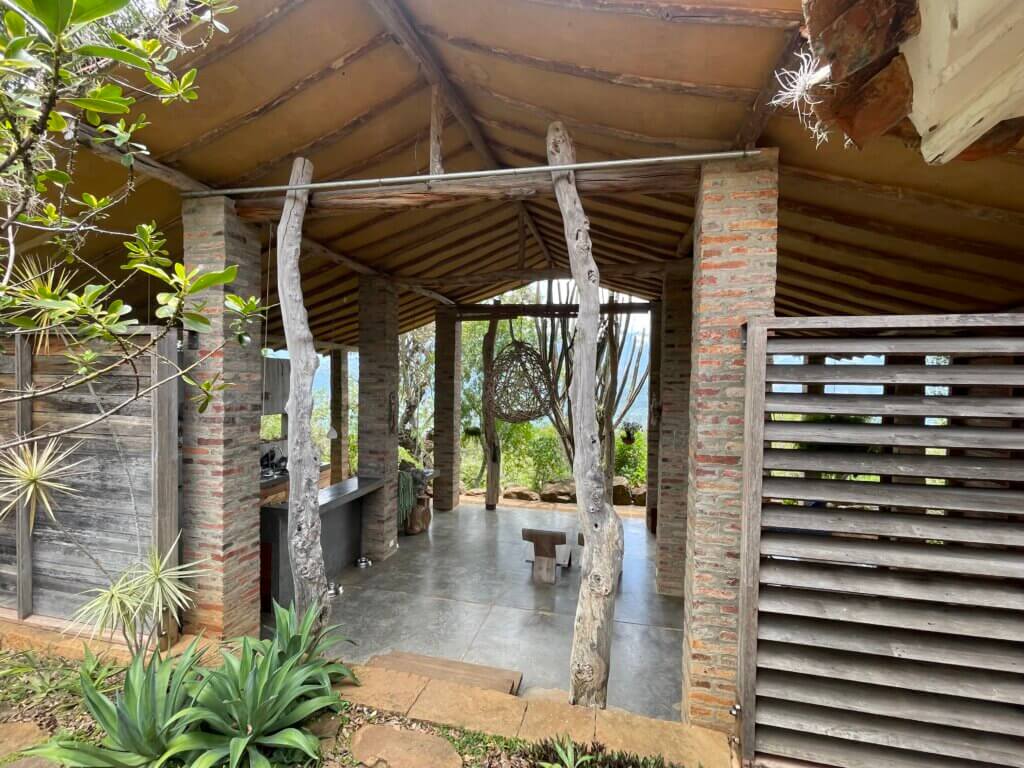
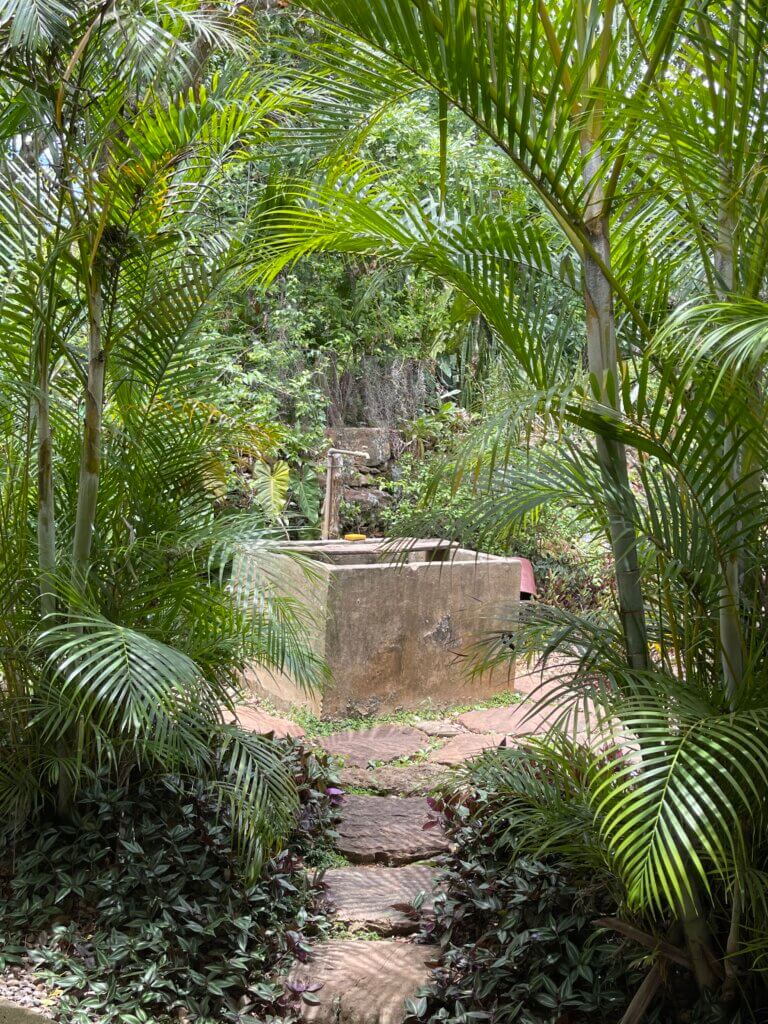
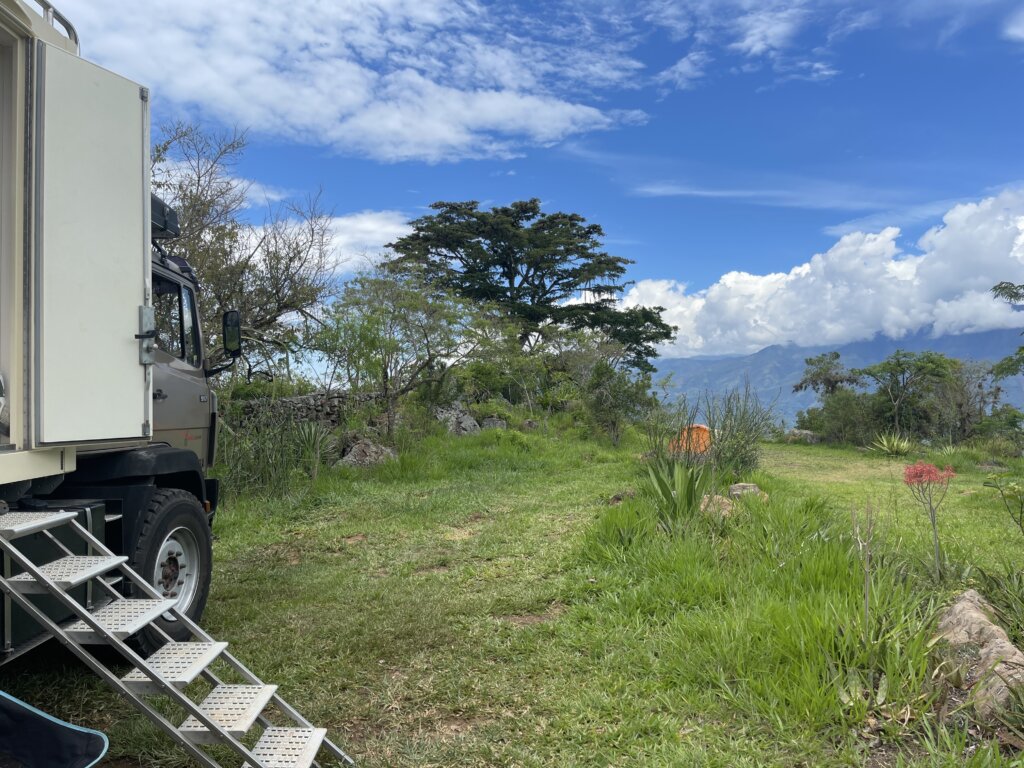
A few more photos of Barichara
